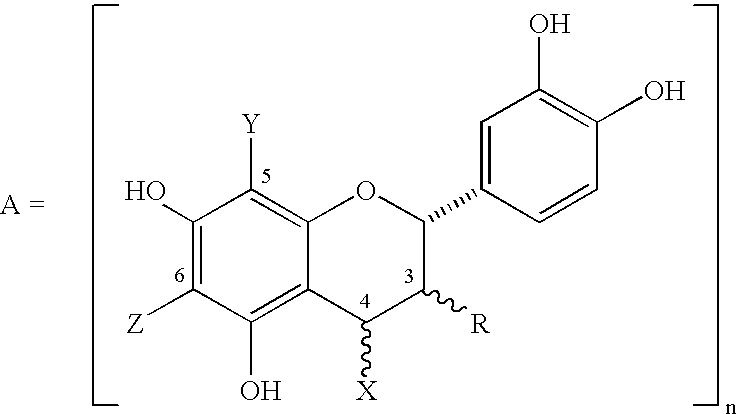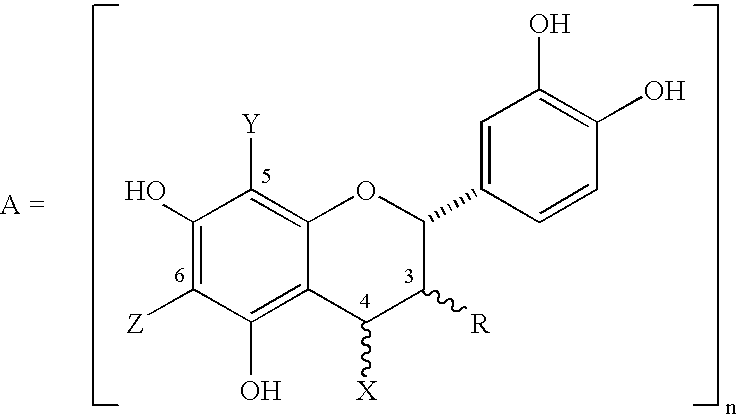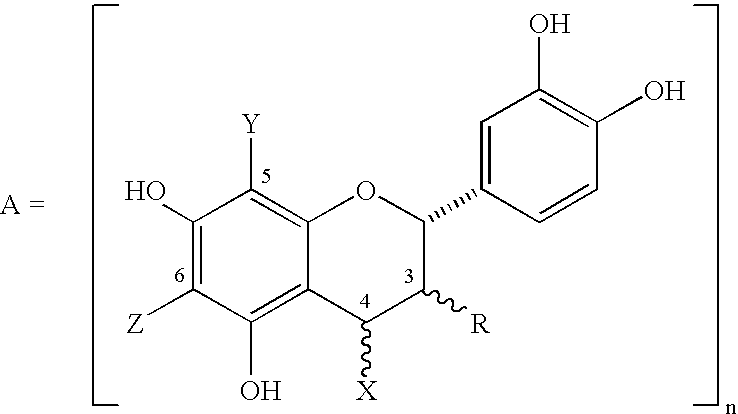Cocoa extracts prepared from cocoa solids having high cocoa polyphenol contents
a cocoa extract and cocoa solid technology, applied in the field of cocoa extracts, can solve the problems of reducing the yield of clean beans, reducing the efficiency of achieving accurate separation of beans, and reducing the efficiency of cleaning process, so as to reduce the moisture content of cocoa beans, reduce the loss of moisture, and preserve the effect of active polyphenols
- Summary
- Abstract
- Description
- Claims
- Application Information
AI Technical Summary
Benefits of technology
Problems solved by technology
Method used
Image
Examples
example 1
Method of Obtaining Cocoa Butter from Cocoa Beans Utilizing the Inventive Process
Commercially available cocoa beans having an initial moisture content of from about 7 to 8 percent by weight were pre-cleaned using an 11".times.56" Scalperator (manufactured by Carter Day International, Minneapolis, Minn., USA). Approximately 600 bags of cocoa beans (39,000 kg) were pre-cleaned over a 6.5 hour time period. The beans were fed into the inlet hopper where the flow rate was regulated by a positive feed roll. The beans were fed onto the outside of a rotating wire mesh scalping reel. The beans passed through the wire mesh reel and subsequently through an air aspiration chamber where light dirt, dust and strings were aspirated out of the product stream. The beans that did not pass through the scalping reel were conveyed to the reject stream. This reject stream consisted of large clumps of beans, sticks, stones, etc. The amount of resultant reject was approximately 150 kg, or 0.38% of the star...
example 2
Method for Quantitating Procyanidin Levels in Various Samples Processed by Conventional and Inventive Methods
A set of cocoa samples, listed in Table 2, (6-7 g) were ground to a fine powder using a Tekmar A-10 Analytical Mill for 5 minutes. The samples were transferred to a 50 ml polypropylene centrifuge tube, and approximately 35 ml or hexane was added, and the samples were shaken vigorously for 1 minute. The samples were centrifuged at 3000 rpm for 10 minutes using an International Equipment Co. IECPR-7000 Centrifuge, and the hexane layer was decanted. This fat extraction procedure was repeated for a total of three extractions. Approximately 1 g of the resultant defatted material was weighed into a 50 ml polypropylene centrifuge tube, and 5 ml of a solution containing 70% acetone: 29.5% water: 0.5% acetic acid solution was added. The sample was vortexed for approximately 30 seconds using a Scientific Industries Vortex Genie 2, and spun at 3000 rpm for 10 minutes in the IEC PR-7000 ...
example 3
Cocoa Bean Winnowing Using An Air Fluidized-bed Density Separator
An air fluidized bed density separator (AFBDS) manufactured by Camas International was tested to determine its effectiveness as a cocoa bean winnower. A blend of beans from West Africa and Central America were heated at about 150.degree. C. for about 4 minutes to loosen the shell and were cracked with a centrifugal bean breaker. The cracked beans were separated by the AFBDS which resulted in a shell in nib level of between 0.29 to 0.99% and a nib in shell level off between 6.7 to 8.7%. Although the shell in nib level was acceptable, it was observed that a significant portion of the nibs in the shell was a result of pieces of nib which remained in the large pieces of shell. The large pieces of shell, resembling cracked eggshells, were conveyed on the too of the separation chamber. These shells typically had large pieces of nib entrapped within them which conveyed the nibs into the shell stream. To reduce this nib loss, ...
PUM
| Property | Measurement | Unit |
|---|---|---|
| temperature | aaaaa | aaaaa |
| temperature | aaaaa | aaaaa |
| temperatures | aaaaa | aaaaa |
Abstract
Description
Claims
Application Information
 Login to View More
Login to View More - R&D
- Intellectual Property
- Life Sciences
- Materials
- Tech Scout
- Unparalleled Data Quality
- Higher Quality Content
- 60% Fewer Hallucinations
Browse by: Latest US Patents, China's latest patents, Technical Efficacy Thesaurus, Application Domain, Technology Topic, Popular Technical Reports.
© 2025 PatSnap. All rights reserved.Legal|Privacy policy|Modern Slavery Act Transparency Statement|Sitemap|About US| Contact US: help@patsnap.com



